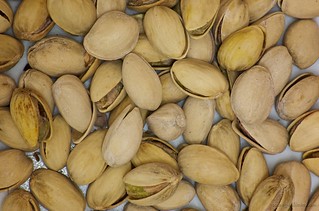Hitchhiker's Guide to Clojure

The following is a cautionary example of the unpredictable combination of Clojure, a marathon viewing of the BBC’s series “The Hitchhiker’s Guide to the Galaxy”, and a questionable amount of cheese.
There have been many tourism guides to the Clojure programming language. Some that easily come to mind for their intellectual erudition and prose are “The Joy of Touring Clojure”, “Touring Clojure”, “Clojure Touring”, and the newest edition of “Touring Clojure Touring”. However, none has surpassed the wild popularity of “The Hitchhiker’s Guide to Clojure”. It has sold over 500 million copies and has been on the “BigInt’s Board of Programming Language Tourism” for the past 15 years. While, arguably, it lacked the in-depth coverage of the other guides, it made up for it in useful practical tips, such as what to do if you find a nil in your pistachio. Most of all, the cover had the following words printed in very large letters: Don’t Worry About the Parens.
To tell the story of the book, it is best to tell the story of two people whose lives were affected by it: Amy Denn, one of the last remaining Pascal developers in Cincinnati, and Frank Pecan, a time traveler, guidebook reseacher, and friend of Amy.
Amy, at this moment, was completely unaware of the chronological advantages of her friend, being preoccupied with the stark fact that she was about to be fired. She had been given a direct order from her CEO to deploy the code at 3:05pm. It was now 3:00pm and she had realized that if she did so, all the data painstaking collected about the effects of Throat Singing on the growth rate of tomatoes would be erased. Unfortunately, the CEO did not really understand or trust anything having to do with technology or programming. In truth, the only two things that he seemed to care about were tomatoes and checklists of unreasonable things. The fact that no course of action available to her in the next 5 minutes would help her employment situation, agitated Amy so much that she was violently shelling and eating pistachio nuts.

The “Hitchhiker’s Guide to Clojure” says that pistachios are Nature’s most perfect s-expression. An s-expression is recursively composed of s-expressions or an atom. In the case of the humble pistachio, the atom is the nut inside. The atom simply evaluates to itself. This is best seen is an example where the following expressions are evaluated in the Clojure REPL
1 2 3 4 | |
`
Which leads to the very practical tip of what to do if you find a nil in your pistachio. The answer, of course, is to be thankful that you have a value that represents the absence of a value - and to get another pistachio.
In Clojure, a s-expression is written with parens. The first element within the parens is an operator or function and the rest of the elements are treated as data, some of which can be s-expression themselves.
1 2 | |
Considering the pistachio again, we can think of the nut in the shell as an s-expression, (providing we also imagine an operator or function right in front of the nut).
Here we define a function that will turn the nut red, by appending the string “red” to the nut-name.
1 2 3 4 | |
Notice that if we put a quote in front of the expression, it will no longer be evaluated.
1
| |
quoting the expression turns it into a list, which we can then manipulate with other s-expressions (code as data).
1 2 3 | |
If we try to evaluate the s-expression with just the nut name in the parens, we get an error because there is no function in the first slot.
1 2 | |
The whole thing of having to have a function in front of the nut in the pistachio has invited much heated debate on the suitability of pistachios being held up as the paragon of an s-expression. But critics have failed to explain the corroborating evidence of red pistachio nuts, or find a more suitable nut.
Amy’s time traveling friend, Frank, is due to appear on the scene momentarily to reveal that the whole world is really made of Clojure Datomic datoms. Furthermore, a transaction is going to be evaluated soon, which will retract all the facts on EVERYTHING. The practical effect of this will be that nothing will have an attributes. A world without any attributes at all would be quite boring and, for all purposes, be non-existent. Luckily for Amy, Frank is a Datomic Time Traveller and has a hand-held “evaluator” which will save them. Also luckily, the readers will be spared dialog, since the author can never figure out where to put the punctuation and is really rubbish at it. Only one phrase will be illustrated. This is the rather important one, having been uttered by Amy after it was explained to her that she, and the entire world around her, was entirely composed of Clojure:
“Isn’t that the language with a lot of parens?”
To which, Frank handed her the “Hitchhiker’s Guide to Clojure” and pointed to the words on the front cover, “Don’t Worry About the Parens.”, and turned to the first page.
“There is absolutely no need to worry about the parens. It is known today that the first really important discovery of humankind was not fire, but Paredit. Paredit mode magically acts to insert and balance the right parens to the point where they actually can no longer be seen. This is evident by just looking around you. The world is made of Clojure and there are millions, billions, and trillions of parens all around you and your tea cup right now. Yet, you don’t see them. Paredit mode.”
At the urging of Frank, Amy quickly stuffed the remaining pistachios in her pockets while he readied his evaluator. The display showed some large integer value, that decreased as he pushed the buttons on the console. Finally, he pushed the large red button and two parens started glowing on either side of them … and they disappeared.